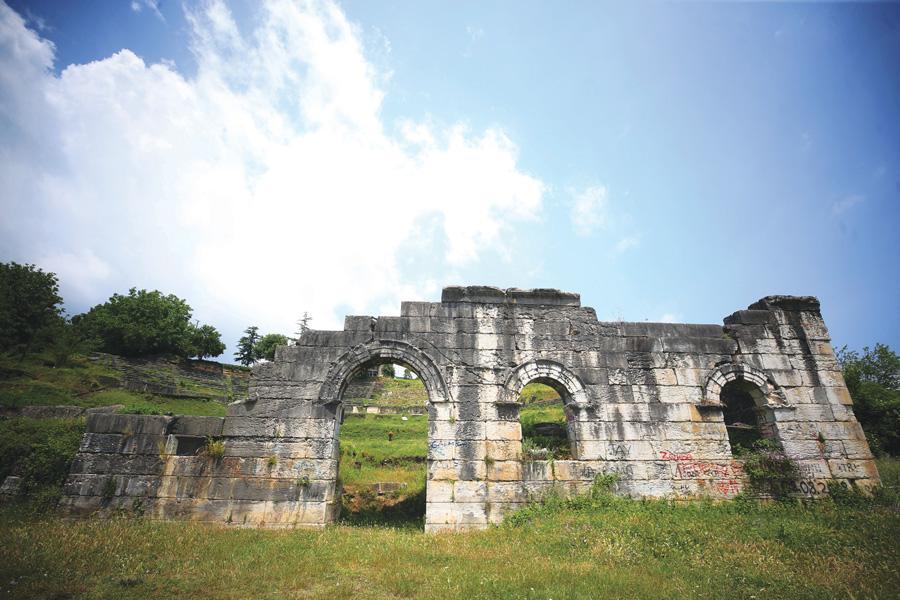
Excavations in the ancient city of Prusias ad Hypium in the northwestern province of Düzce and at an eighth century Genoese Castle on the UNESCO World Heritage Temporary List are expected to unravel more of the history of the region and attract tourists.
Previous excavations in the city, known as the “Ephesus of the Western Black Sea,” in the Konuralp neighborhood, revealed an ancient stonemasonry theater, which dates back to the third century B.C., but there is more underground to unearth, including the rest of the theater, aqueducts and a Roman bridge.
“This is a very important area for the region because the ancient theater still survives. … This project will make Konuralp visible,” said excavation consultant Emre Okan, an associated professor of archaeology at Düzce University (DU).
Some of the finds are already on display at a museum with three exhibition rooms, two storage areas and an administrative wing.
Last year, archaeologists excavated the steps of the theater, said Provincial Culture and Tourism Director Resul Taştan, speaking to the state-run Anadolu Agency. This year’s excavations will start soon in the same area, Taştan said.
“By the end of the month, we will start digging,” he said. “The theater here is the only ancient theater preserved in the Black Sea Region. This year, we will continue our excavations in cooperation with the ministry, governor, municipality and Düzce University.”
The excavation team will be larger this year to try to access more of the structures, Okan said.
“The biggest trouble here and in the other ancient cities is that we estimate what and where we can find [certain historical buildings], but we feel sorry that we are not able to reach them in the short-term,” he said.
[HH] Work at Genoese Castle
The restoration of an eighth century Genoese Castle located on the seashore in Düzce’s Akçakoca district also has the potential to revive tourism in the region.
Built by the Genoese to ensure their control over the Black Sea trade route, the castle joined the UNESCO World Heritage Temporary List about four years ago.
Half of the restoration work at castle, which was declared as an archaeological natural site by the Cultural and Natural Heritage Preservation Board, was completed in two years.
A member of the excavation team, Ahmet Bilir, said that the area where the excavations occurred was a colonial city within the castle walls founded by the Genoese in the Middle Ages.
“The importance of this place is that the castle was used as a trading center. The most important proof of this is that the Genoese used this area in their efforts to dominate the Black Sea trade. This castle is the most important proof of the port trade that started with the Greeks and continued with the Genoese,” Bilir said.
He said that underwater excavations also continue in the area.
“We recently found an anchor in the area that we thought was part of a merchant ship. We are working on this anchor. We know that there is evidence from World War I in the Black Sea region. We know there are mine remains. Therefore, the castle and its surroundings are of strategic importance. For this reason, we can say that it is preferred by the Genoese.”